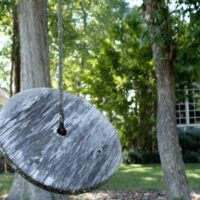Things To Know About Maryland’s Attractive Nuisance Doctrine

There is a legal principle designed to protect children from hazards on private property, it is commonly referred to as Maryland’s attractive nuisance doctrine. This means there are specific considerations for some property features, such as pools, playground equipment, or abandoned buildings, as these can draw children onto the property and put them at risk of injury.
Reasonable steps need to be taken by owners to secure dangerous areas and prevent accidents. If you want to learn more, have a chat with a Baltimore personal injury lawyer about what you need to know about the attractive nuisance doctrine, how it applies in that state of Maryland, and how liability is determined when a child is hurt.
What Happens When Kids Are Injured on Private Property?
An attractive nuisance is a property feature or condition that is likely to attract children and poses a danger to them. Examples include unsecured swimming pools, poorly maintained playground equipment, and construction materials. Additionally, vacant homes or buildings with broken windows, debris, or hazardous structures can be particularly dangerous.
Under this doctrine, property owners may be held liable if a child is injured by one of these hazards, even if the child was trespassing. This is because Maryland law recognizes that children may not fully understand the dangers posed by certain property features.
When a child is injured on private property due to an attractive nuisance, the property owner could be held responsible if the following conditions are met:
- Evidence of the hazard being likely to attract kids. This is important because it means the property owner knew or should have known that the feature could attract children. For example, a brightly colored playground in an unfenced yard is likely to draw attention.
- Unreasonable risk present. The feature must present a significant danger, such as deep water in an unfenced pool or sharp objects in a pile of debris.
- Risk was not understandable by the hurt party. The injured child must have been too young or inexperienced to fully grasp the danger posed by the condition.
- Property owner failed to take reasonable steps. If the owner could have taken reasonable steps to secure the area but failed to do so, they may be found negligent.
How Can Property Owners Secure Properties?
To avoid liability, Maryland property owners should take proactive steps to secure their property. This could include putting in barriers around hazards and ensuring that features like playground equipment meets safety standards. Abandoned buildings or construction sites need to be secured to prevent unauthorized access and warning signs need to be posted to deter entry.
Should a child be injured due to an attractive nuisance, their family may be able to pursue compensation for damages. An experienced Baltimore personal injury lawyer can help gather evidence, determine liability, and advocate for the child’s rights.
What danger do you believe should have been fixed in order to avoid a minor being injured? Contact the knowledgeable attorneys at Iamele & Iamele, LLP. Justice and compensation could be in reach. Contact us to book a confidential appointment.

